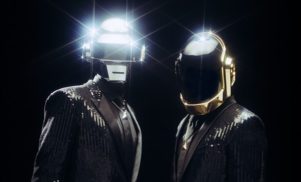Last Summer, pop giant Lady Gaga announced that that she’d be starting the campaign for her new album – later titled ARTPOP – in September 2012.
That’s right: it was an announcement of when she would start announcing information about the album. Gaga might be one of the world’s biggest pop stars, but even for an act of her size, it seemed excessive.
The problem is, it’s been The Done Thing for several years now that when an album is considered big enough, the record label and press team stagger information about it to the point where it starts to feel like Chinese water torture. God knows how many tidbits of information were drip-fed to press and fans in the campaign for LCD Soundsystem’s This Is Happening, for example, but when the album finally came out I was so sick of hearing about it that I never even listened to it. I still haven’t, and I doubt I’m the only one. Gaga’s announcement of an announcement was just a logical extension of the trend.
Now, there are various problems that factor into this trend – press outlets, of course, didn’t have to cover every shred of information about This Is Happening, just as they won’t have to track a similar campaign that will inevitably follow, say, the next Arcade Fire album, but we all know these things equal traffic, which is the currency that most advertisers and brands judge websites by. There are labels that do this kind of thing creatively – see XL’s series of videos for Sigur Ros’s Valtari and smart Vampire Weekend campaigns, for instance, or Kanye West’s various stunts in the lead-up to My Beautiful Dark Twisted Fantasy – but they’re thin on the ground. Generally, the whole situation is a slog.
And yet, 2013’s biggest pre-album campaign (though, of course, it actually started long before this year), for Daft Punk’s Random Access Memories, has felt like a breath of fresh air. A key factor is its emphasis on life outside of the internet. The team behind Random Access Memories’ campaign aren’t stupid, and recognise that the internet will be the fastest way that information on the album is circulated – that’s inevitable, now – but by breaking the album’s key assets through television (the first audio was debuted on Saturday Night Live) and the live arena (the video for that track, ‘Get Lucky’, as well as the album’s full trailer, was debuted on a big screen at this year’s Coachella festival), they’ve managed to make the whole process seem as IRL as possible in 2013. There’s even a traditionalist edge to the group’s first interview about the album appearing in Rolling Stone, where Thomas Bangalter explained that “when you drive on the sunset strip and see these billboards [a giant billboard advert for the album greeted those driving down the highway to Coachella this month], it’s more magical than a banner ad”.*
Random Access Memories is an album with an ensemble cast, and although it’s hard to judge whether it was pre-planned or a happy accident, the way that news of its existence first broke, with various contributors (Nile Rodgers, Paul Williams, Panda Bear, Giorgio Moroder) confirming their involvement throughout 2012, long before a title or even loose release date was announced, plays into the same throwback feature film aesthetic emphasised by that Coachella trailer. It also ties into the album’s general throwback feel; as the group’s Guy-Manuel explained to Rolling Stone, “The ‘70s and the ‘80s are the tastiest era for us … all these guys were tripping on meeting again and playing together again.” It couldn’t be further from the humble, one-boy-in-his-bedroom feel that dominates dance music right now, and makes the album feel like an actual event.
This leads me to the most crucial part of it all: the timing. Just as Justin Timberlake’s The 20/20 Experience couldn’t have come at a better time, with American pop music missing the magic that Timberlake, The Neptunes and Timbaland dominated the early-to-mid ‘00s with, Random Access Memories arrives in the era of EDM. Not only has dance music’s dominance of the American charts and festival circuit increased Daft Punk’s idol status in the country, it’s also followed its own tail so far down a rabbit hole of funk-less 4×4 and circus trap and dubstep that it’s screaming out for an album with actual soul and craft to it. A recent GQ interview with EDM poster boy Avicii revealed that almost all of his songs “riff on other people’s compositions”, with Avicii himself referring to them as simple and festival-friendly to the point of being “almost stupid”. Can you think of anything more removed from a studio session with Nile Rodgers and Giorgio Moroder?
Talking to Metro this month, Fleetwood Mac referred to the lead-up to their 1977 album Rumours – a period charged by cocaine and dominated by the real-life relationships in the band falling apart – as the best promotional campaign a record could ever have. Who’d have thought that over thirty years later, a pair of robots would be responsible for reviving the human element of a pre-release culture that’s become synonymous with the internet? And the best bit? The whole thing’s been so good that it’s made most forget that Daft Punk’s last album, appropriately titled Human After All, really wasn’t all that.
*On the other side of the coin, the album’s title and artwork were broken through Daft Punk’s website and Facebook page respectively, and the last month has seen video interviews with collaborators on the album published through Vice‘s The Creators Project – though personally I’ve seen the interviews as more of an enjoyable accompaniment to the campaign than an integral part of it ala the SNL ad and Coachella trailer.






































